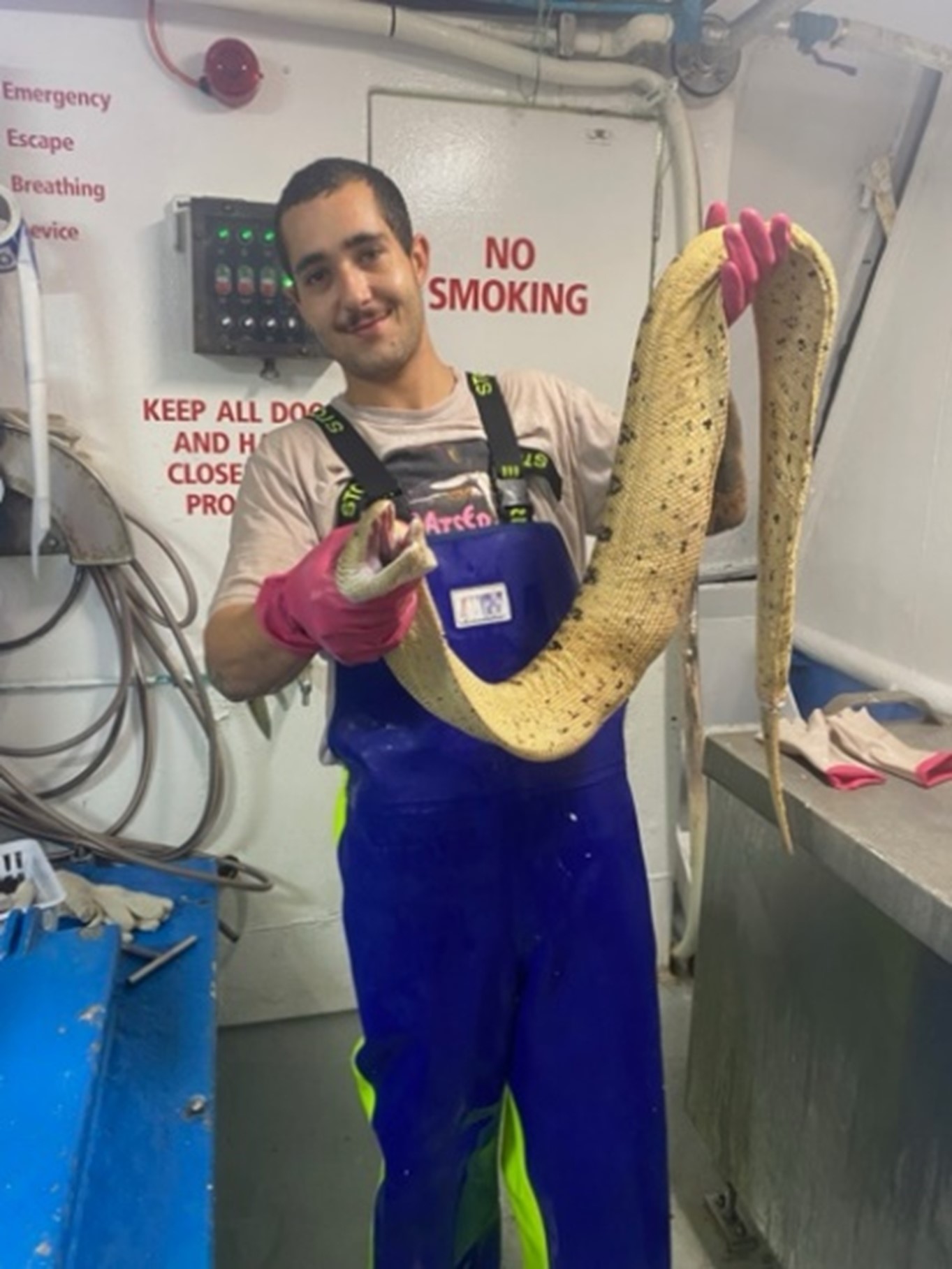A sector-led initiative to reduce the bycatch of sea snakes in prawn trawlers, is refining a new snake escape device and testing its effectiveness in three major prawn fisheries.
A new bycatch reduction device currently being trialled, could reduce the number of sea snakes caught in prawn trawl nets by more than 80 per cent, improving the safety and sustainability of prawn fishing.
Marine engineer John Wakeford from Fishing Untangled has designed a new sea snake Bycatch Reduction Device (BRD) for Sea Harvest, the largest operator in Western Australia’s prawn fisheries.
Driving best practice
For Sea Harvest, the main driver in commissioning the BRD is retaining Marine Stewardship Council (MSC) sustainability certification for the Exmouth Gulf Prawn Managed Fishery, which it fishes with six vessels.
“The MSC process is valuable in providing direction to the prawn sector to support larger sustainability initiatives,” says John. “To retain certification, operators in these fisheries need to demonstrate that they are making progress towards world best practice."
"Addressing sea snake bycatch was identified as the priority in need of most attention."
Initial 2023 trials yielded promising results, with an 81% reduction in sea snake bycatch. The trials involved a side-by-side comparison on the Sea Harvest trawler FV Point Cloates, with the new BRDs attached to nets on one side and standard nets on the other. All nets were already fitted with turtle exclusion devices and square mesh window BRDs, which also facilitate sea snake escape.

Refining BRD design
With promising results from the early trials, FRDC has funded research (2023-155) to further refine the device and provide evidence to support its adoption.
Trials in Exmouth Gulf are continuing in 2024, incorporating cameras and lights on the nets to observe sea snake behaviour and interaction with the BRDs.
Understanding water flows and the movement of sea snakes and other bycatch will be crucial in optimising the placement of the sea snake escape BRD in the nets.
Trials are also planned in the Queensland East Coast Otter Trawl Fishery later in 2024, and in the Northern Prawn Fishery in 2025. John anticipates further refinements to the BRD based on camera footage analysis.
FRDC Research Portfolio Manager Adrianne Laird highlights the importance of the new BRD design.
"Interactions with sea snakes are a challenge for these fisheries. The development and implementation of new gear to mitigate these interactions will be highly beneficial, both for the safety of the crew handling them and the sea snakes.”
Related FRDC Project
2023-155: Prawn trawl sea-snake bycatch reduction device – Assessment, refinement, and extension





